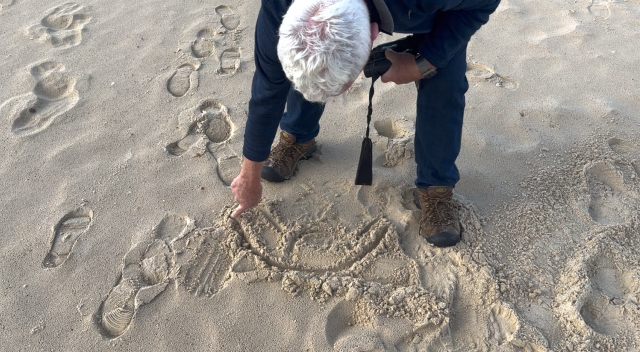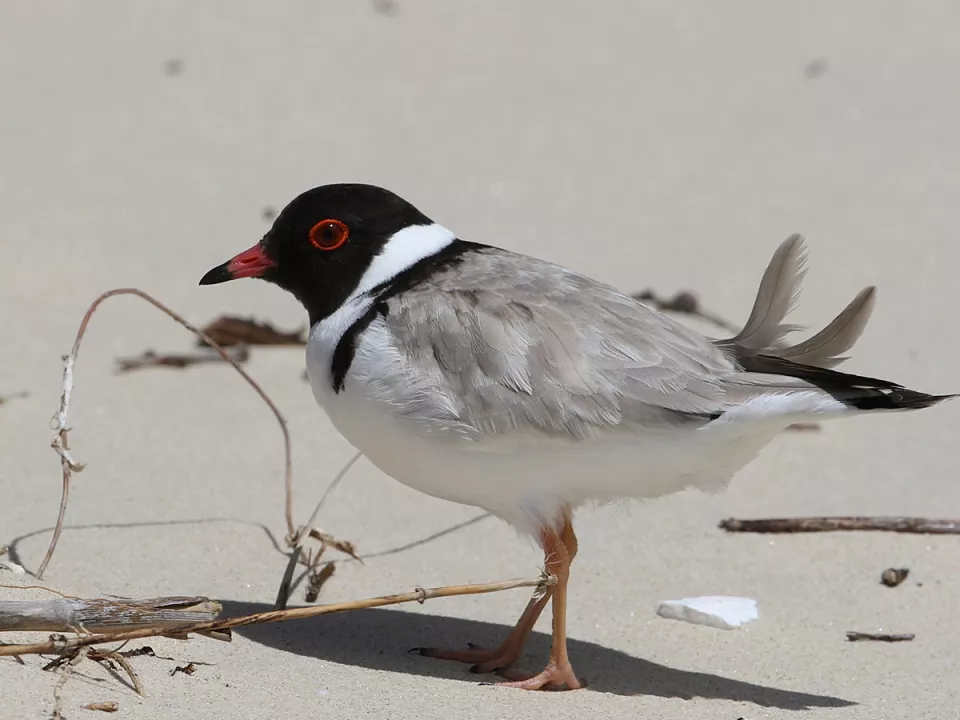Say you have a perfectly straight beach with a headland at each end. The waves come in, and as they come around the headland, the waves bend, dissipating energy at the edges first and then concentrating all the energy from the wave in the middle, and so this is why the curve forms. The wave as it approaches progressively loses energy around the edges. The point of maximum force and maximum energy is in the middle, pushing the beach into a curved shape. That’s why beaches are curved.
You can see this if you look at an aerial map of beaches. An island with many beaches is most illustrative. If you look at the beaches, you can see that there is a beautiful symmetry with the curve of the beaches. ‘Catenary curves’ are the name given to a beautiful geometrical curve, and that is how beaches are shaped. This clearly demonstrates that there is a physical process going on related to the amount of energy, the type of material and so on, it is not just a random process.

If you look at the beaches, you can see that there is a beautiful symmetry with the curve of the beaches...This clearly demonstrates that there is a physical process going on related to the amount of energy, the type of material and so on, it is not just a random process.

Bob Graham
Say you have a perfectly straight beach with a headland at each end. The waves come in, and as they come around the headland, the waves bend, dissipating energy at the edges first and then concentrating all the energy from the wave in the middle, and so this is why the curve forms. The wave as it approaches progressively loses energy around the edges. The point of maximum force and maximum energy is in the middle, pushing the beach into a curved shape. That’s why beaches are curved.
You can see this if you look at an aerial map of beaches. An island with many beaches is most illustrative. If you look at the beaches, you can see that there is a beautiful symmetry with the curve of the beaches. ‘Catenary curves’ are the name given to a beautiful geometrical curve, and that is how beaches are shaped. This clearly demonstrates that there is a physical process going on related to the amount of energy, the type of material and so on, it is not just a random process.

If you look at the beaches, you can see that there is a beautiful symmetry with the curve of the beaches...This clearly demonstrates that there is a physical process going on related to the amount of energy, the type of material and so on, it is not just a random process.
You might like...

Why is the sand finest at the top of a beach?

Bruny - two islands joined by a Tombolo?

Contrasting beaches at the Neck

Protecting shorebirds on Bruny Island
Newsletter
Sign up to keep in touch with articles, updates, events or news from Kuno, your platform for nature
